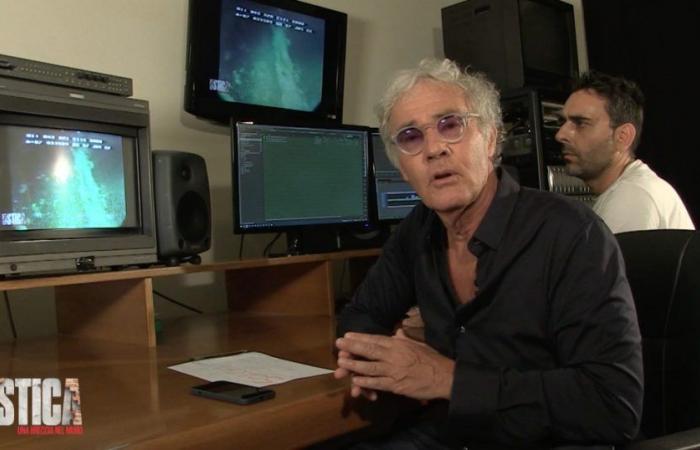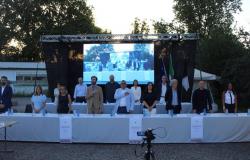
Milan, 25 June. (Adnkronos Salute) – The alarm goes off at 10.30pm on an ordinary early summer evening in Milan. It’s Sunday June 16th. The emergency room of the San Carlo hospital is mobilized for the arrival of a young patient in very serious conditions. He is a boy who fell from a height of 12 metres. Estimated survival probability: very low, under 40%. But doctors don’t give up. To save him, over 50 professionals take to the field for a long night marathon, including delicate procedures that follow one another and around 50 transfusions. Super team work, which continued the next day too. And after about a week, experts today speak with caution of “reasonable optimism”. In the sense that “we have emerged from that hyperacute phase of imminent life danger”, Fabrizio Sammartano, the head of the Trauma Team at the San Carlo hospital, explains to Adnkronos Salute. The patient “is in stable condition”, although he is considered “still critical because he is in intensive care”.
The experts from the Asst dei Santi hospital in Milan reconstructed the stages of the complex emergency operation, where the patient arrived “seriously compromised”, “suffering from major trauma and in a state of hemorrhagic shock”. The boy, Sammartano recalls, “was already in critical condition when the 118 rescuers arrived, and for this reason a medical vehicle had also been sent. It was already clear at the time that he had internal bleeding”, even if “the obviously it had not yet been possible to identify her.” Meanwhile in the hospital, alerted by the Areu operations center (Regional Emergency Emergency Agency), the San Carlo emergency triage nurse contacts the professionals of the Trauma Team who immediately implement the emergency protocol, alerting the operating room and setting up the ‘trauma’ station in the red code room. “In practice – explains Sammartano – every necessary element is activated in cascade, according to international protocols which ensure that the patient finds everything ready to welcome him upon arrival”.
For the young patient, examinations and evaluation by specialists begin immediately. The presence of “internal bleeding in the abdomen and pelvis in addition to the thoracic trauma” emerges. The boy has “multiple injuries in different anatomical areas” caused by the fall. And there is a need for urgent surgery to control the bleeding caused by the fractured pelvis. The experts therefore perform an “extraperitoneal pelvic packing” directly at the patient’s bed, a life-saving surgical maneuver, served “to staunch the main bleeding”. Having stabilized the patient as much as possible, “we were able to proceed with a head CT scan which fortunately revealed no neurosurgical problems”, says Sammartano.
Then the patient was taken “to the operating room for abdominal surgery – continues the head of the Trauma team – Once this part was completed which allowed us to have more acceptable parameters”, the team deemed it necessary to do “an angiography with the radiologist interventionist”. It’s a long and intense night, the diagnostic-therapeutic procedures continue at a rapid pace. In total there will be – the hospital lists – 5 surgical operations, one angiographic, also punctuated by “transfusions of 50 bags of red blood cells, plasma, platelets and coagulation factors”. When the patient “begins to respond more adequately – explains Sammartano – he is taken to have a CT scan of the whole body to understand if there are other injuries to treat, even less priority ones. In this phase we have well characterized the fractures he had – of the pelvis, arm and leg – and the orthopedist proceeded with the temporary stabilization of these fractures”. The CT scan also shows “a lesion of the thoracic aorta, which is a very serious lesion, and the patient was also treated for that”.
All this required over 12 hours of work, “with obviously the fundamental operations carried out immediately as soon as the patient arrived” at the hospital. In these cases, time is life and, as the Asst observes, “the timeliness and coordination of the Trauma team made the difference between life and death”. The experts thus managed to transfer the patient to intensive care “where he continued his treatments”, says Sammartano. “Then, 24 and 72 hours later, he was taken back to the operating room to finish the procedures that began on the abdomen. Now the definitive orthopedic part is missing.” The over 50 professionals who went into action to save the boy belong to 13 different operating units and services of the hospital, including Emergency Room, Surgery, Anesthesia and Resuscitation, Neurosurgical Intensive Care, Diagnostic and Interventional Radiology, Analysis Laboratory, Operating Room, Medicine transfusion, vascular surgery, orthopedics and pharmacy.
“The Trauma team is a surgically directed structure that has the task of coordinating and treating patients who are victims of major trauma who come to our Trauma Center – declares Sammartano – With around 300 activations per year, we were the local trauma center with neurosurgery (Ctz) with more accesses from 2022 in the Milan metropolitan area. Cases like this are not very frequent, but thanks to a significant investment in training and continuous simulations we are able to maintain a high level of care provided.”
Despite a survival probability of less than 40%, after about a week “the patient is alive, stabilized in intensive care and his clinical condition is slowly improving, waiting to conclude the orthopedic treatment”, they explain from the hospital. “This success – concludes Simona Giroldi, general director of the Santi Paolo e Carlo Asst – is a testimony to the effectiveness and dedication of the Trauma Team of the San Carlo hospital, which has demonstrated excellence in the management of the most serious medical emergencies and this case , like everyone else, proves it. I am proud to be able to count on a team of top-level professionals who dedicate themselves with passion and great commitment to caring for citizens.” Several studies in the literature confirm how the presence in the hospital of a team dedicated to the management of the patient who is a victim of major trauma drastically reduces avoidable mortality due to trauma (from 42-43% to 3%) and halves deaths due to bleeding.





